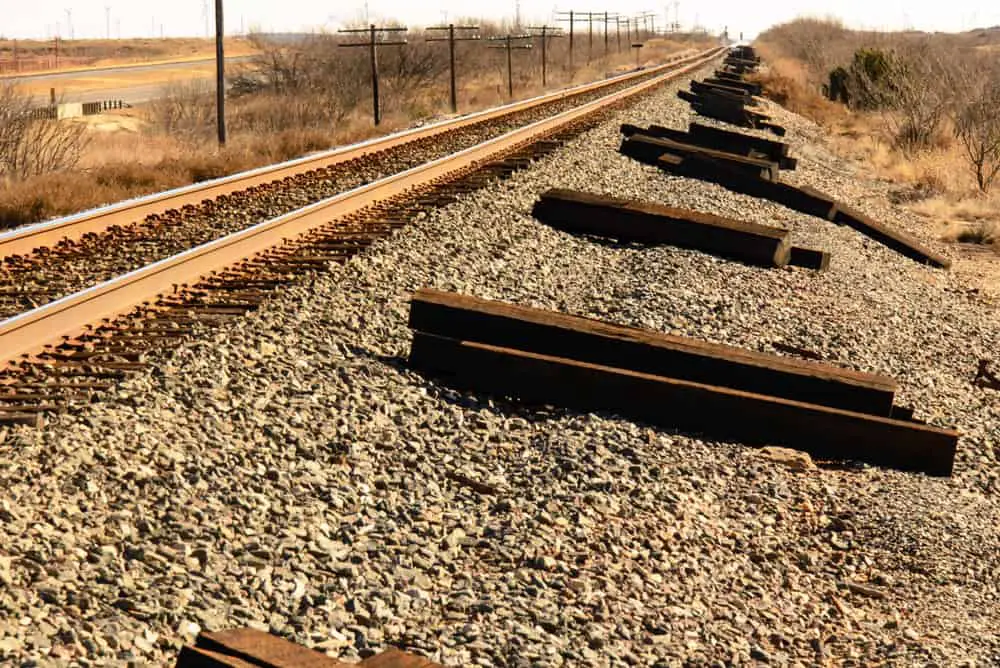Reclaiming Your Landscape from the Past
Growing up in the rugged countryside, railroad ties held a nostalgic charm. They marked the boundaries of our sprawling property, adding a rugged touch to our surroundings. However, as time went on, these aging structures began to deteriorate, threatening to detract from the beauty of our home.

Image: vehiclehelp.com
From their humble origins in the transportation industry to their repurposing as rustic garden accents, railroad ties have a rich history. But when their time has come to an end, the task of removing them can seem daunting. This comprehensive guide will provide you with step-by-step instructions and expert insights to effectively get rid of railroad ties, reclaiming your landscape for a brighter future.
Understanding the Problem
Railroad ties are typically made of creosote-treated wood, a chemical preservative that protects them from rot and decay. While effective in extending their lifespan, creosote is a hazardous substance that can leach into the soil and groundwater, posing environmental concerns.
Furthermore, deteriorating railroad ties can become a tripping hazard, attracting pests, and creating an eyesore in your yard. Prompt removal is crucial to ensure the safety and aesthetics of your property.
Removal Methods
- Manual Removal: Using crowbars or levers, carefully pry the ties loose from the ground. Exercise caution to avoid damage to nearby plants or structures.
- Mechanical Removal: Employ a backhoe or excavator to dig around the ties and lift them out. This method is more efficient but can be more expensive than manual removal.
Safety Precautions
Wear protective gear, including gloves, goggles, and a mask, when removing railroad ties to avoid exposure to creosote. Handle the ties carefully to prevent splinters or cuts. If you suspect contamination, contact a qualified waste disposal company for proper handling.
Disposal Options
Depending on local regulations, you may dispose of railroad ties in several ways:
- Landfill: Most landfills accept railroad ties for disposal, although fees may apply.
- Incineration: Ties can be incinerated at a facility that specializes in hazardous waste disposal.
- Repurposing: If the ties are in good condition, consider repurposing them as decorative accents, planters, or other landscape elements.
Image: www.lawnsite.com
Expert Advice
For a successful railroad tie removal, follow these expert tips:
- Determine Ownership: If the railroad ties are located on public property, contact the municipality for permission to remove them.
- Inspect for Damage: Before handling ties, inspect them for cracks, splinters, or broken ends that could cause injury.
- Contact a Professional: If you encounter large or heavily contaminated ties, consult a professional disposal company to ensure safe and compliant removal.
Frequently Asked Questions
Q: How do I identify creosote-treated railroad ties?
A: Creosote leaves a dark, oily residue on the wood.
Q: Is it safe to burn creosote-treated ties in a backyard fire pit?
A: No, burning creosote releases toxic fumes that can be harmful to human health and the environment.
Q: Can I use railroad ties as firewood?
A: Due to the presence of creosote, railroad ties are not suitable for firewood.
How To Get Rid Of Railroad Ties
Conclusion
By following the steps outlined in this comprehensive guide, you can effectively get rid of railroad ties, revitalize your landscape, and ensure compliance with environmental regulations. Remember, the safety of yourself and the environment should always be paramount. As you embark on this task, let this article serve as your trusted companion, empowering you to reclaim your property for a more vibrant and sustainable future.
Are you ready to bid farewell to railroad ties and welcome a renewed landscape? Share your thoughts and experiences in the comments below.